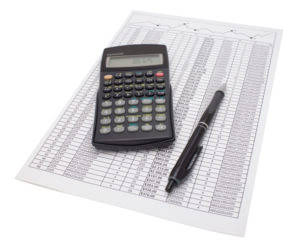
Interest loan for students is also another tax shield for an individual, which is also tax-deductible making it cheaper. In the realm of capital budgeting and financial decision-making, the concept of a tax shield emerges as a powerful force. It’s income statement like a secret ally that can significantly impact the financial health of a project or investment. Properly using tax shields as allowed by law should not increase your chances of an audit. However, aggressive tax planning or incorrectly claiming deductions can raise red flags. Always ensure your deductions are well-documented and in compliance with tax laws.
Modigliani and Miller Proposition I with Taxes

Tax Shield is a crucial concept in capital forecasting that allows businesses to benefit from tax advantages. It is important to understand the different types of tax shields and how they can impact financial planning. In this section, we will explore various types of tax shields and provide insights from different perspectives. Capital investments often have tax implications that can impact the overall returns. For example, certain investments may qualify for tax deductions or credits, such as depreciation allowances for fixed assets. It is essential to consider the tax shield provided by these investments to optimize your tax liabilities.
- In the realm of modern business, the pursuit of entrepreneurial success is often paralleled by a…
- Over the ten-year period, the cumulative tax savings would amount to $15,000 ($1,500 annual tax savings multiplied by ten years).
- This guide will show you how to calculate tax shield benefits of depreciation and integrate it with broader tax shield concepts.
- Conversely, a services business may have few (if any) fixed assets, and so will not have a material amount of depreciation to employ as a tax shield.
- This is where corporations in early years, use a number of depreciation methods to lower taxes.
- This formula allows individuals and businesses to quantify the actual financial advantage gained from a deductible expense.
Real-World Example: Tax Shields in Action
Therefore, expenses related to interest play the role of a shield against tax obligations. In other words, the tax shield protects part of the taxpayers income from being taxed. The tax shield benefits are determined by the overall tax rate as well as cash flow for a specific tax year. There are several types of tax shields that companies can utilize, including debt and depreciation. Debt, for instance, can provide a tax shield through the deduction of interest expenses.

What Is the Formula for Calculating Tax Shield?
The reason is that, this technique provides a larger depreciation as tax deductible expense in early years of asset’s economic life and less depreciation in later years. Accelerated depreciation is a tool for taxpayers to https://boolmann.de/bookkeeping-services-in-denver-for-small/ defer the payment of income tax until some later years by deferring the recognition of a portion of taxable income. Different methods exist for calculating depreciation, which influence the timing of the tax shield.
- Staying updated on the latest regulations is crucial to ensure all applicable deductions are claimed.
- Understanding how to calculate tax shield benefits derived from depreciation is crucial for accurate financial planning.
- With a corporate tax rate of 21%, the tax shield is calculated by multiplying $250,000 by 21%, resulting in $52,500.
- Similarly, errors in calculating interest expense deductions, such as failing to properly allocate interest payments or exceeding deduction limits, are widespread.
- Understanding Capital Investments is a crucial aspect when it comes to managing your finances and maximizing your returns.
- The term “Tax Shield” refers to the deduction allowed on the taxable income that eventually results in the reduction of taxes owed to the government.
Real-World Examples: Applying Tax Shield Calculations to Everyday Scenarios

These deductions reduce a taxpayer’s taxable income for a given year or defer income taxes into future years. Tax shields ultimately reduce the amount of taxes owed by an individual or business. The term “Tax Shield” refers to the deduction allowed on the taxable income that eventually results in the reduction of taxes owed to the government. The formula for tax shields is very simple, and it is calculated by first adding the different tax-deductible expenses and then multiplying the result by the tax rate. Companies using accelerated depreciation methods (higher depreciation in initial years) are able to save more taxes due to higher value of tax shield. When calculating taxable income, businesses can deduct the depreciation expenses from their revenue, resulting in a lower taxable income.
Company

In the section below, we cover two of the most common methods and their Cash Flow and Valuation impacts. Also, at higher tax rates, Depreciation is going to provide additional savings. There are a variety of deductions that can shield a company (or Individual) from paying Taxes. Below is a break down of subject weightings in the FMVA® financial analyst program. As you can see there is a heavy focus on how to find depreciation tax shield financial modeling, finance, Excel, business valuation, budgeting/forecasting, PowerPoint presentations, accounting and business strategy. The difference in EBIT amounts to $2 million, entirely attributable to the depreciation expense.

